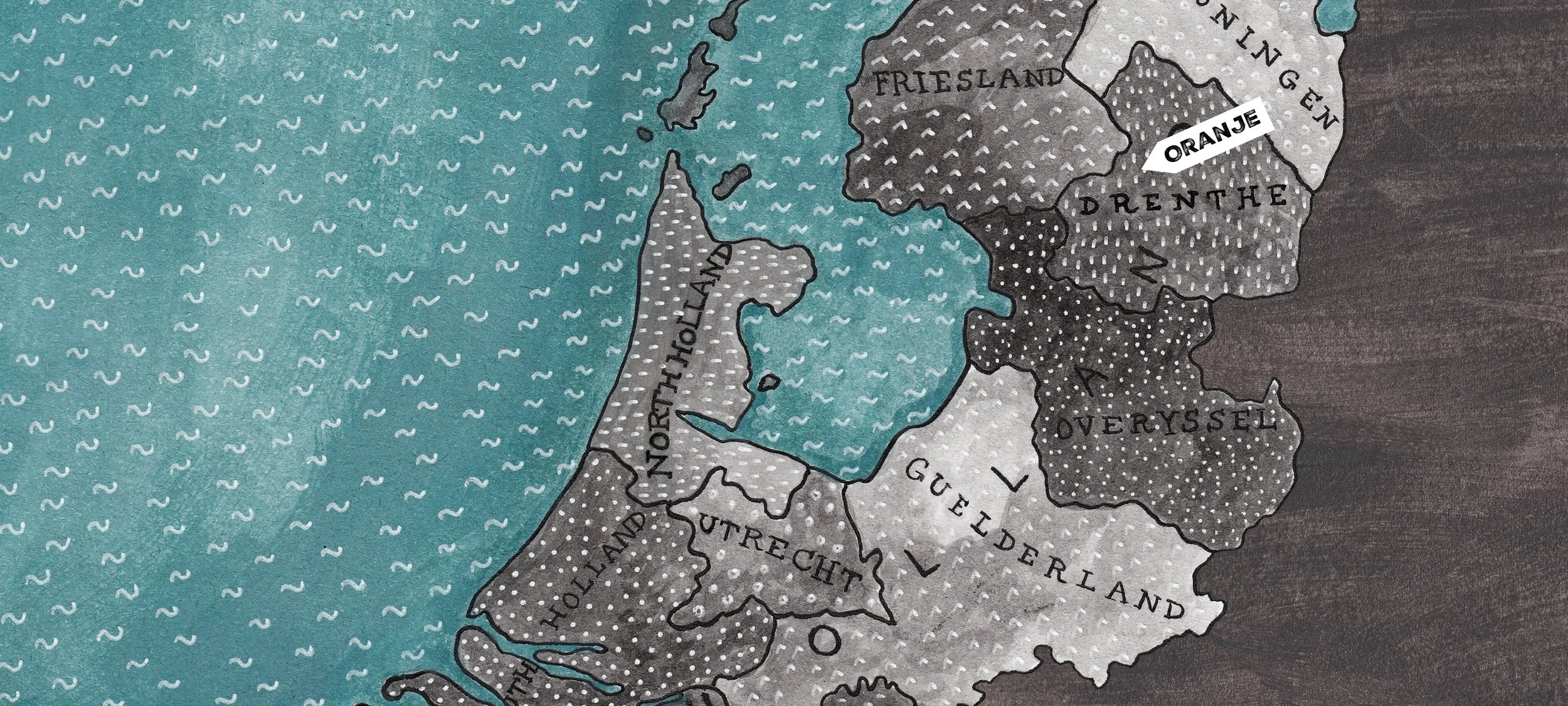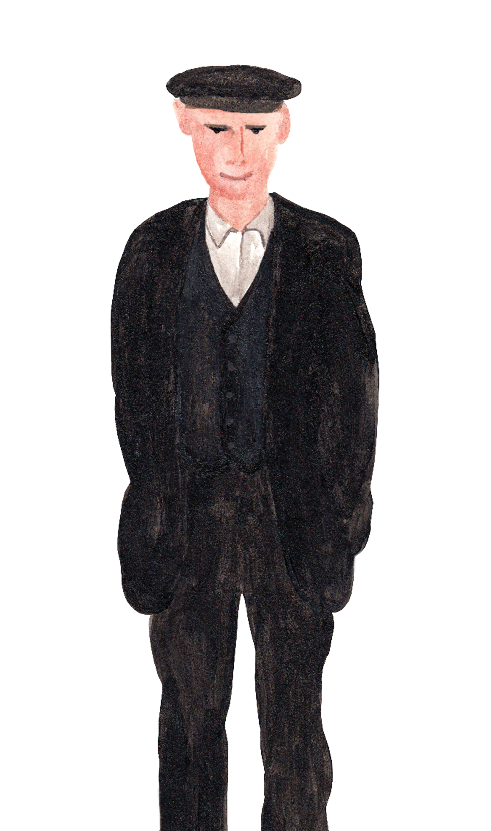Oranje
The hand-painted picture book Sense of Belonging is the visual outcome of my thesis Representing Sense of Place, created during my Master’s program in Information Design at the Design Academy Eindhoven (2014–2016).
My research explored the dynamic relationship between people and place, leading to an analytical model that maps how history, experiences, and emotions shape a location’s meaning. Using the Dutch town of Oranje as a case study, with its 150-year history, the book illustrates how community connections evolve over time. Each transformative period is captured through paintings, focusing on individuals and their ties to the environment and community.
Presented at the Dutch Design Week, the project sparked many conversation on the interplay between community, history, and belonging. Below, three individuals from the book are featured.
Hugo - 1853
In the North-Eastern part of The Netherlands, Drenthe, many strong man were needed to help dig a canal. Hugo travelled up there hoping to earn some money. When he arrived he found extensive open heather fields, with here and there some sod houses and poor wooden barracks. One of these became his home for the time being, shared with other canal diggers that also had arrived from far.
Each day Hugo worked with his bare feet in the mud. The task was tough, the clay unpredictable and the canal progressed slowly while the long days passed by. Even though Hugo was tired and his body sore, he kept on working. After eight months and 1300 meters of digging, the canal officially was named the ‘Oranje Canal’, in honour of King William III. But for Hugo it would always stay nameless, he had already left months before.
Feitze - 1913
From his home, Feitze can see the ships full of potatoes passing by his window. They are on their way to the potato flour factory, just a little further along the canal, where Feitze is a factory worker. And so are all of Feitze’s neighbours. The factory provided Feitze with a well-built house made out of white brick walls and clay roof tiles. Similar to all his neighbours. Over the years Feitze’s family grew. And so were the families of his neighbours.
Together, the factory workers families and the surrounding potato farmers formed a strong community. They are the roots of the little village of Oranje. Step by step the village grew and met with all their basic needs. A local grocery store for the wives, a local elementary school for the kids, and a cafe for the men to unwind from long working days. Feitze’s identity is Oranje, Oranje is his identity.
Levie - 1942
One day during the German occupation in World War II, Levie received the ‘request’ to travel to Camp Oranje. He left his beloved family behind and arrived with 79 other Jewish men.
They slept in a converted barn in the middle of Oranje’s potato factory fields. Every day Levie had to work long hours in the fields while performing physical hard labor. Levie was not build for this kind of work and couldn’t believe the hard working mentality of the locals.
The watery porridge for breakfast and a couple of bare buns during the day didn’t help him to gain the needed strength.
Every night, when Levie laid his body to rest on the primitive bunkbed, he felt a little weaker than the day before. Every night, his uncertainty grew. How much longer would he be kept here? How many more nights before he would be reunited with his wife and children?
The Book
The Exhibition



























